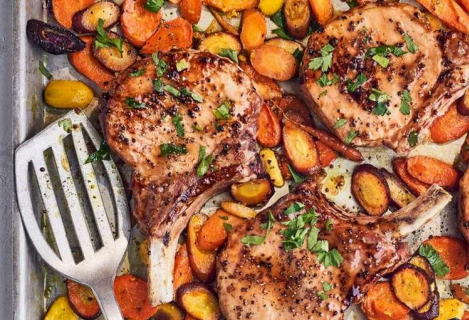Helping Kids Navigate Halloween Candy with Intuitive Eating
Halloween is all about fun—costumes, friends, and of course, candy. But for many parents, the overflowing trick-or-treat bag can spark worries: Will my child eat too much sugar? Should I ration it? As a pediatric dietitian and mom of three, I encourage families to see this holiday as an
opportunity to teach intuitive eating and foster a healthy relationship with sweets.
1. Start with a Calm Mindset
Children take cues from us. If we approach candy with anxiety or strict rules, kids may feel the need to hide or overeat. Instead, treat Halloween candy like any other fun food. A neutral, relaxed attitude helps your child stay tuned to their own hunger and fullness signals.
2. Offer a Balanced Pre-Trick-or-Treat Meal
Serve a filling dinner the night of Halloween that includes protein, fibre, and healthy fats—think tacos, chili, or a hearty soup with bread. A satisfying meal helps steady blood sugar and reduces the urge to fill up on candy.
3. Allow Unrestricted Candy Time (at First)
When your child returns home, let them enjoy the excitement. Consider allowing free choice from their candy bag on Halloween night. While it may feel counterintuitive, research shows that giving children autonomy can reduce the “forbidden food” effect and prevent bingeing later.
4. Transition to Routine
After the first night, integrate candy into your regular snack or dessert schedule. For example, let your child pick a few pieces to include with an afternoon snack or after dinner. This keeps candy from becoming a daily battle.
5. Encourage Mindful Eating
Talk about how different candies taste and feel—crispy, chewy, chocolatey. Encourage your child to notice which treats they truly enjoy, and when they feel satisfied. This builds life long intuitive eating skills.
6. Keep Perspective
One holiday won’t define your child’s diet. What matters is the overall pattern of balanced meals, movement, and positive attitudes toward food throughout the year.
Upcoming Parent Workshop: Managing Treats Through the Holiday Season
Want more practical strategies for supporting your child’s intuitive eating skills as candy canes, cookies, and holiday parties roll in? Join me for “Trick-or-Treat: Balancing Sugar & Fun this Holiday Season”, a live online workshop designed for parents of toddlers through school-aged
kids.
You’ll learn:
● How to set up a family food environment that promotes trust and reduces sugar battles
● Language that keeps sweets neutral—no more “good” or “bad” foods
● Tips for navigating school parties, family gatherings, and endless holiday goodies
Date & Time: October 21st at 8:00 pm
Registration Info: See your centre for the sign-up code!
Come with questions and leave with a clear plan to enjoy the season without food fights.
Bottom Line:
Halloween is a chance to help your child learn to trust their body and enjoy sweets without guilt.

